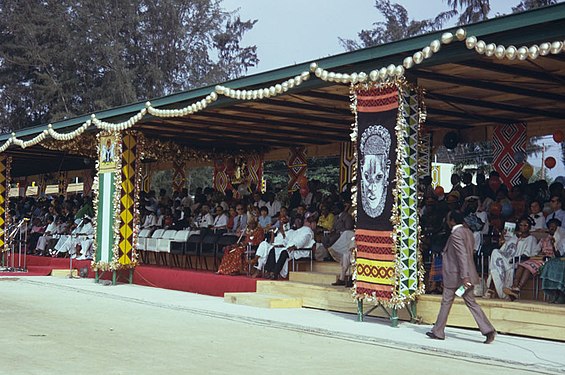Exploring How Nigeria’s Vibrant Festivals Quietly Shape the Housing and Property Landscape
Across the globe, August signals a cultural crescendo. It’s the season of celebration, from Burning Man’s surreal installations in Nevada to the kinetic energy of the Notting Hill Carnival in London. But beyond the music, costumes, and colour lies a powerful force many don’t often consider, the movement of people, and the real estate ripple effects they leave behind.
In Nigeria, festivals like Ojude Oba in Ijebu Ode, the Ofala Festival in Onitsha, the Durbar in Kano, Calabar Carnival, and the Osun-Osogbo Festival attract thousands of people, both locals and those returning from the diaspora. These cultural moments are deeply rooted in tradition, but their impact goes far beyond heritage. They influence commerce, infrastructure, urban planning and increasingly, real estate development and investment patterns.
Festivals as Catalysts for Urban Expansion
When thousands converge on a town like Calabar in December or Onitsha in October, local demand spikes across sectors. Hotels and short-term rentals are fully booked. Transport services boom. And crucially, real estate interest begins to stir from ancestral home renovations to land inquiries and speculative purchases.
These festivals often serve as “homecomings,” especially for diaspora Nigerians. Over time, this reconnection drives emotional investment in land, family homes, and even new residential developments. In places like Ijebu-Ode and Onitsha, where festivities like Ojude Oba and Ofala are most vibrant, there has been a noticeable increase in gated community developments and serviced land offerings, designed to attract indigenes seeking comfort without losing cultural connection.
Infrastructure Follows Culture
Cultural tourism has also become a compelling reason for governments to invest in infrastructure. Roads are fixed. Public spaces are beautified. Security is enhanced. These upgrades, though initially driven by the need to host crowds, often increase the value and attractiveness of the surrounding property markets.
One clear example is Calabar. The sustained attention the Calabar Carnival has brought to the city has spurred a mini urban renaissance. New estates, commercial centres, and hospitality hubs have emerged, capitalising on both seasonal demand and long-term appeal.
Housing Demand and Seasonal Migration
A less obvious but equally important dynamic is seasonal migration. Festivals create temporary shifts in population. In regions that experience consistent annual influxes, say, during the Durbar festival in Kano or the Argungu Festival in Kebbi, local governments and investors are beginning to plan around these patterns. Think flexible housing units, Airbnb-style developments, and more recently, smart housing clusters that cater to both temporary visitors and long-term dwellers.
Designing with Culture in Mind
As a real estate stakeholder, I’ve come to understand that housing must do more than provide shelter; it must reflect how people live, connect, and celebrate. Cultural festivals offer rich insights into community values, social behaviours, and spatial needs. These insights are critical for designing spaces that not only meet functional requirements but also foster a sense of belonging.
From architecture that draws on traditional motifs to communal spaces designed for gatherings, the best developments are those that subtly honour culture and not erase it.
Culture Isn’t Just Identity, It’s Economic
This season reminds us that culture is more than just heritage; it’s movement, memory, and yes, a market signal. Festivals move people. People move money. And where people and money go, real estate inevitably follows.
So, the next time you witness the colourful spectacle of Ojude Oba or feel the energy of the Calabar Carnival, remember, it’s not just a party. It’s a quietly powerful driver of urban development and economic growth.
For those of us in real estate, it’s also a blueprint for where to look next.


